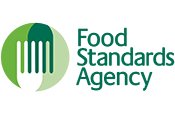Food packaging
Adhesives in food packaging
Sticky labels are often used on fruit and vegetables. They usually give details of what type of product it is and where it comes from. Adhesives are also widely used with other food contact materials.
How is the adhesive in food packaging regulated?
Materials and articles that come into contact with food must follow strict rules. The regulations require that adhesives used in food packaging must not:
- affect the food
- make the food harmful
- change the nature, substance or quality of the food
Monitoring the safety of adhesives
The Food Standards Agency (FSA) commissions research and surveys on chemicals that might transfer to food.
The industry must ensure the chemicals they use comply with the law. They must carry out whatever research that may entail.
Adhesives are part of a variety of food packaging materials. For example, they are used to:
- manufacture rigid packs from cartonboard (box closures)
- seal flexible packaging - including wrappers, pouches and lidding
- attach labels
- laminate (bind together) layers of food contact materials
Chemical substances in adhesives
Several chemical substances are present in adhesives. When used in food packaging, these substances could transfer or migrate into food. The FSA has funded work to check for chemical migration from selected adhesive systems.
Although the research detected several substances in the adhesives, it only found low (parts per billion) levels of migration into foods. When only a small area of adhesive is used and it is not intended to touch the food directly, the risk of migration is low.
- Food Standards Agency Northern Ireland028 9041 7700
